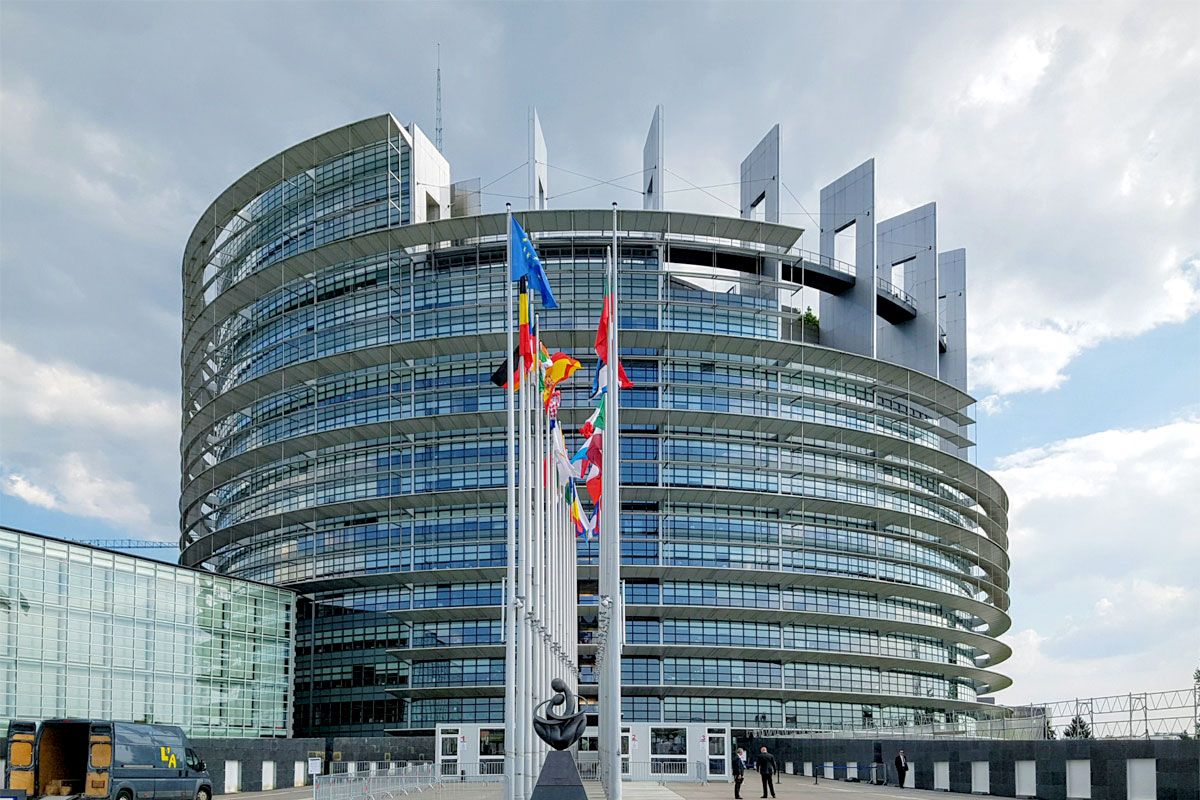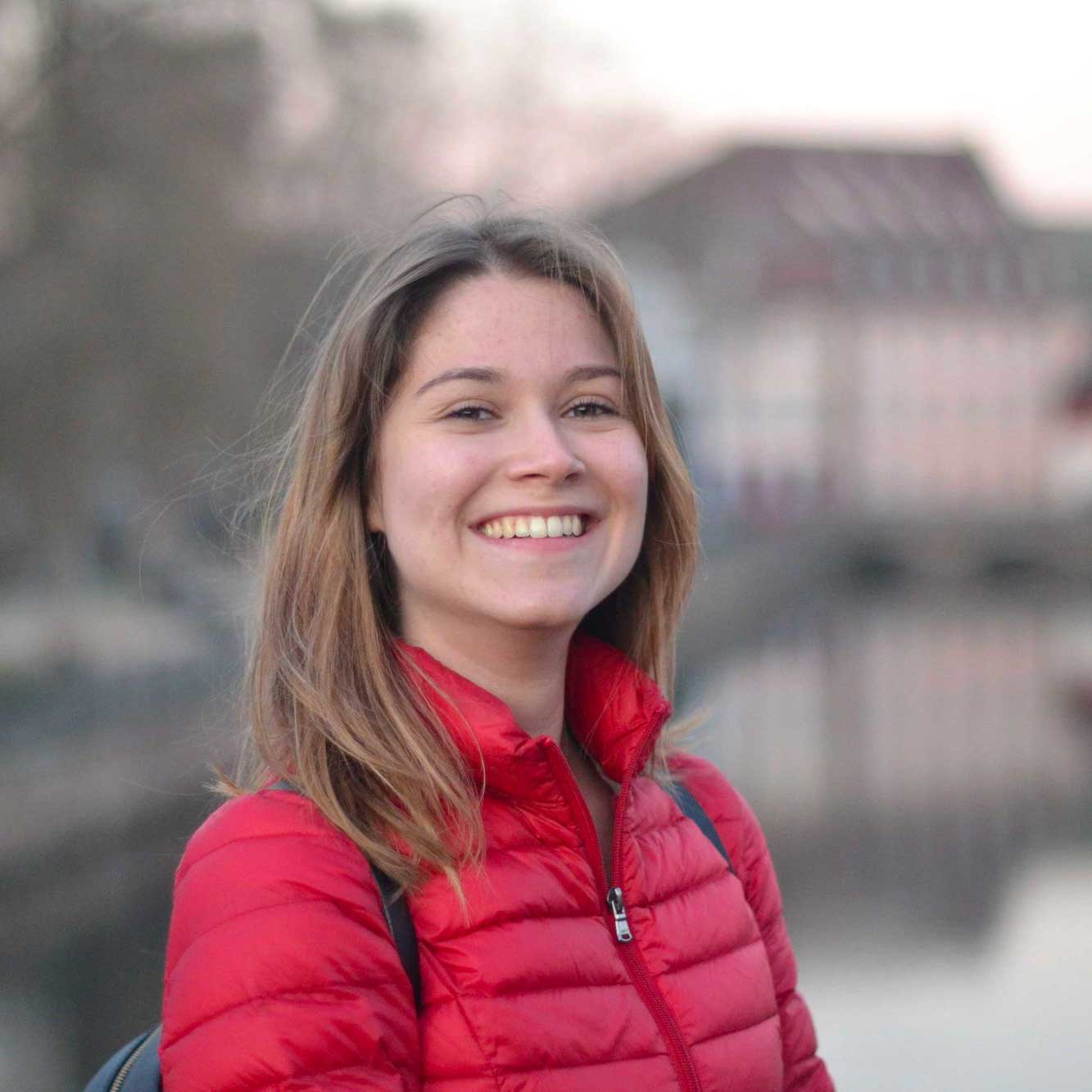Travelers and inhabitants of Strasbourg are invited by the "Parcours d'Europe" to live the European experience. It's a pleasant walk in 8 different steps to make you learn about European Institutions - in the European district in Strasbourg. Let's do it together!
Strasbourg, the European capital
Strasbourg's European status is not limited to its geographical location. Since the arrival of the Council of Europe in 1949, Strasbourg has become the seat of many European institutions, including the European Parliament building!
The city is considered a "European Capital" just like Brussels (headquarters of the European Commission), Luxembourg (EU Court of Justice and Court of Auditors) and Frankfurt (European Central Bank).
Located north of Strasbourg, the European district gathers most of the European institutions and diplomatic representations, some of them located in magnificent private mansions. While walking in the streets around the Parc de l'Orangerie or the XV district, it is common (and amusing) to discover the flags of many countries flying in front of the buildings.
The 8 steps of the "Parcours de l'Europe"
The "Parcours de l'Europe" makes us discover main European buildings through a beautiful 3-kilometer-walk. You can either go on a walk can be done on foot or use a bike.
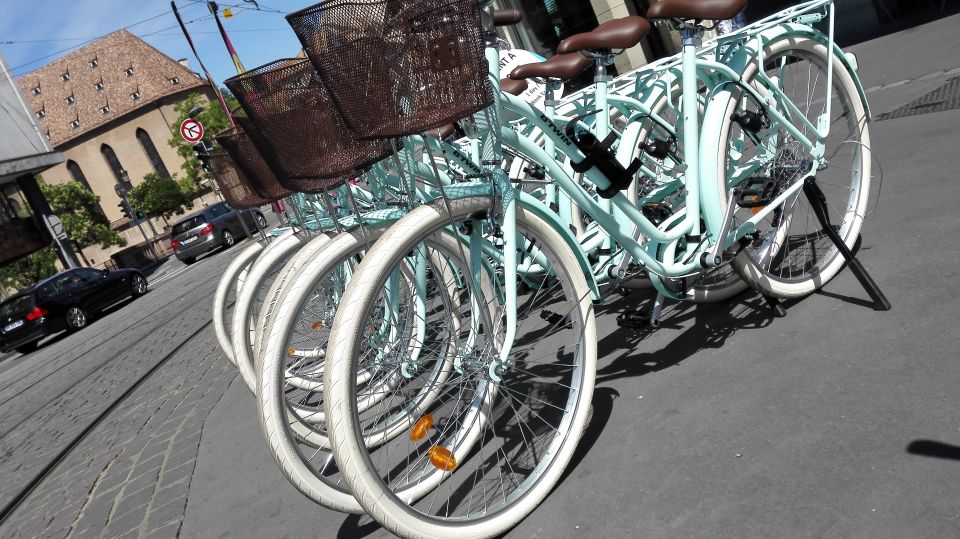
Strasbourg: 1-Day Bike Rental
Rent a beautiful bike for a day and discover the beauty of Strasbourg. Ride safely and take in the main sights such as the European Parliament and the Cathédrale.
The Lieu de l'Europe
The first stage of the "Parcours de l'Europe" is located near the "Boecklin" streetcar stop. It is the Lieu d'Europe.
In 2014, under the impetus of citizens since the 80s, is created the Lieu d'Europe on the Kaysersguet estate. The renovation of this 18th century mansion aims at making Strasbourg known for their values and institutions in the European field.
Animations and activities are often organized there to make families and schoolchildren aware of the Europe of Strasbourg.
It is very pleasant to walk in the beautiful English garden of the Lieu d'Europe, decorated with statues of deities, small benches and yellow daffodils.
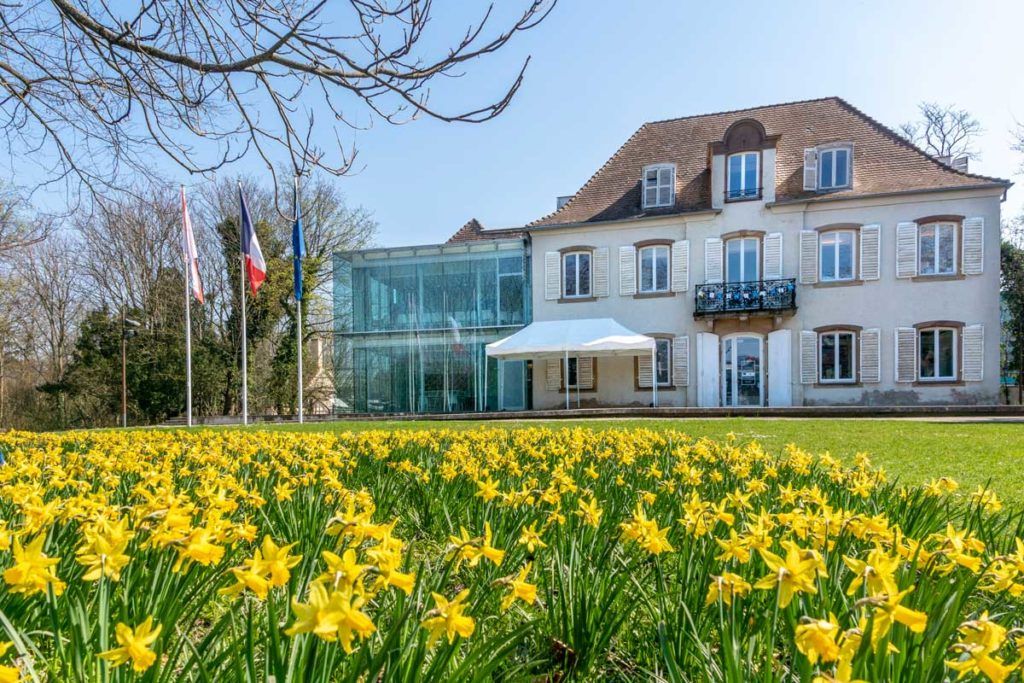
The European Court of Human Rights
As you cross the Allée Kastner, you will inevitably see the Human Rights Palace, in which the great European Court of Human Rights sits. It is an international jurisdiction created in 1959 by the Council of Europe.
I found that the architecture was very original with its two huge glass cylinders on both sides of the building. These have a strong symbolism, evoking the scales of justice. The building of the Palace was inaugurated in 1995. It was built on the plans of the British architect Richard Roger. The project was entitled "glass and pink Vosges sandstone liner". Least I can say is that the Court is as imposing and impressive as a large ship!!
At the foot of the European Court of Human Rights, you can admire one of the remains of the Berlin Wall.
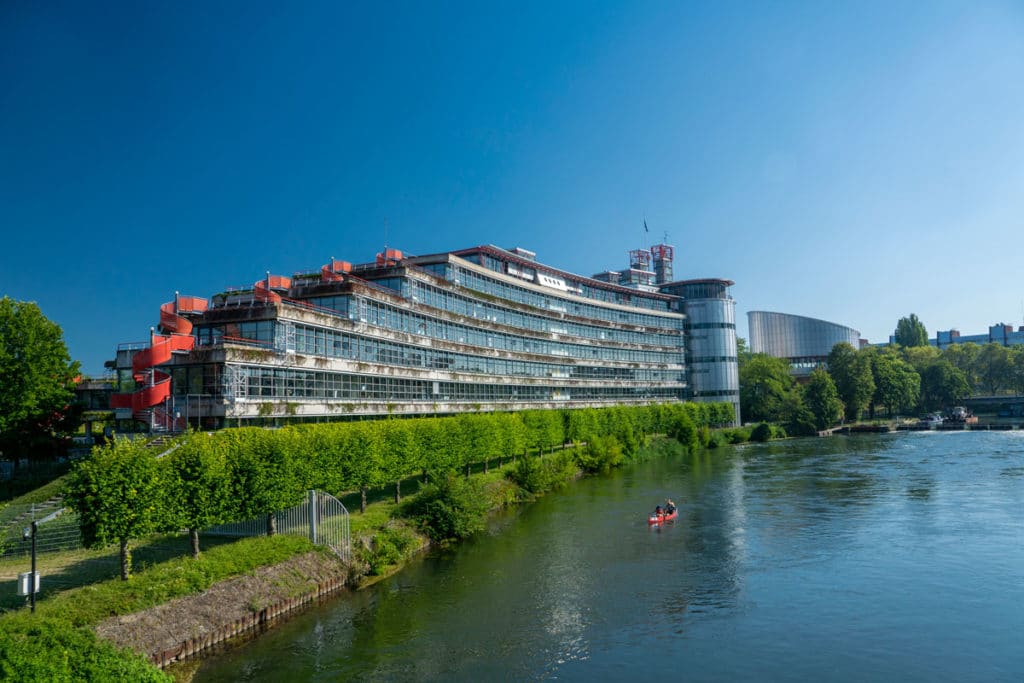
The European Parliament building
The third stop on the Europe Tour is the European Parliament building, which is located in the Louise Weiss building. In my opinion, it is the most emblematic European institution in Strasbourg.
You can contemplate the eight benches for Europe along the Ill river, intended to enhance the European district and the presence of Europe in Strasbourg through the work of artists from the member states of the European Union. I was rather disappointed to see that the benches were damaged, even dilapidated. But once I stood in front of the European Parliament building, my disappointment was quickly forgotten. The building is very spectacular : it's a giant glass facade of 13 000 m².
What do I like most about the European Parliament building? It's opened to the general public to make them discover Europe and the institutions. You can visit the Parlamentarium Simone Veil or the hemicycle, where the parliamentary sessions take place. If you're a group of people, you can even have the chance to contemplate the exceptional view on the Strasbourg Cathedral from the panoramic terrace of the European Parliament building.
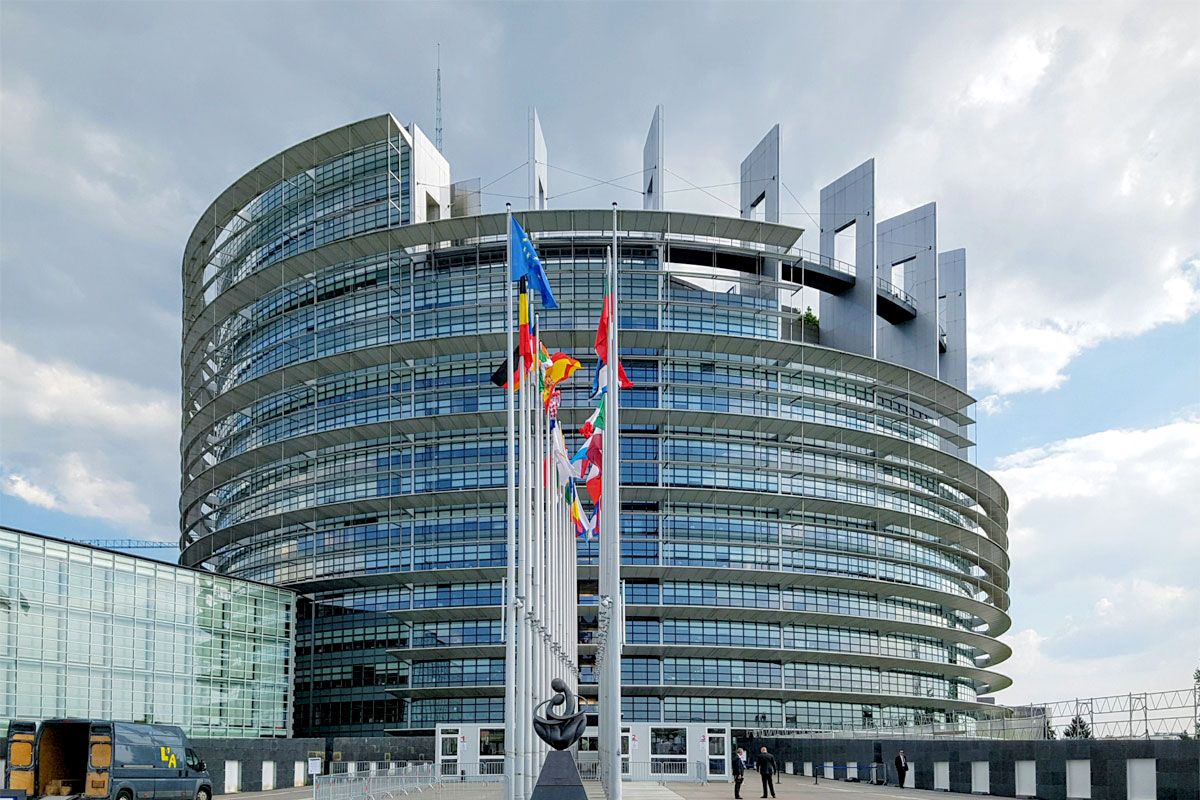
The headquarters of the TV channel Arte
The next step of the Parcours de l'Europe is the TV channel Arte headquarters. To do so, you will have to cross the Ungemach garden-city that is located behind the European Parliament building. It's a beautiful district of 140 houses, built in the 1920s. For the anecdote, housing was assigned to selected couples, on the ideology of eugenics.
Headquarters of TV channel Arte - a Franco-German cultural television channel - look amazing. I really liked the contemporary sculpture of the Giraffe Man by the German Stephan Balkenhof. It's unusual, I didn't expect to see such a work here.
After contemplating the square in front of TV channel Arte's headquarters, you'll walk on the pretty little Passerelle Ducrot to get to the European Ombudsman.
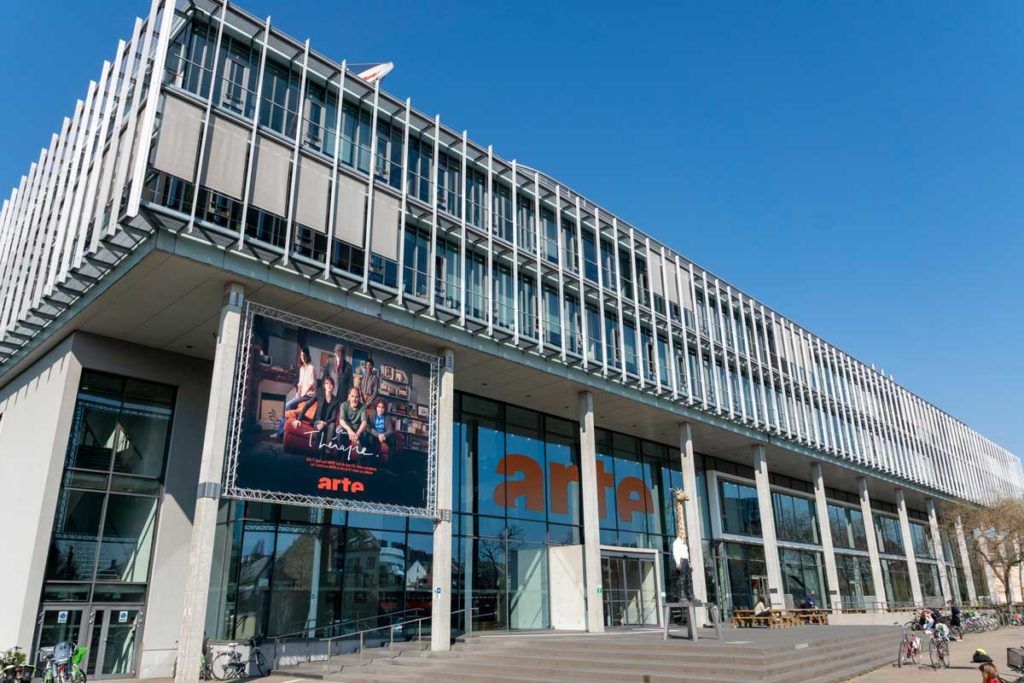
The European Ombudsman
The European Ombudsman is the fifth stage of the Parcours de l'Europe. The Ombudsman's services are located in the Vaclav Havel Building, which belongs to the European Parliament building. This place - that was built in 1953 - is the oldest building of the European institutions.
A jigsaw puzzle of the Parcours de l'Europe stands in front of the European Ombudsman. The role of this institution within the European Union 's understood in a playful way the role of this body within the European Union: "to make the link between the pieces of the giant puzzle, to make sure that each one is well in its place".
Continuing towards the Palais de l'Europe, a bronze statue, entitled "Poseidon of Artemisia", stands on the lawn. This reproduction, which embodies the sea god Poseidon, was donated by Greece in 1998. I found it majestic.
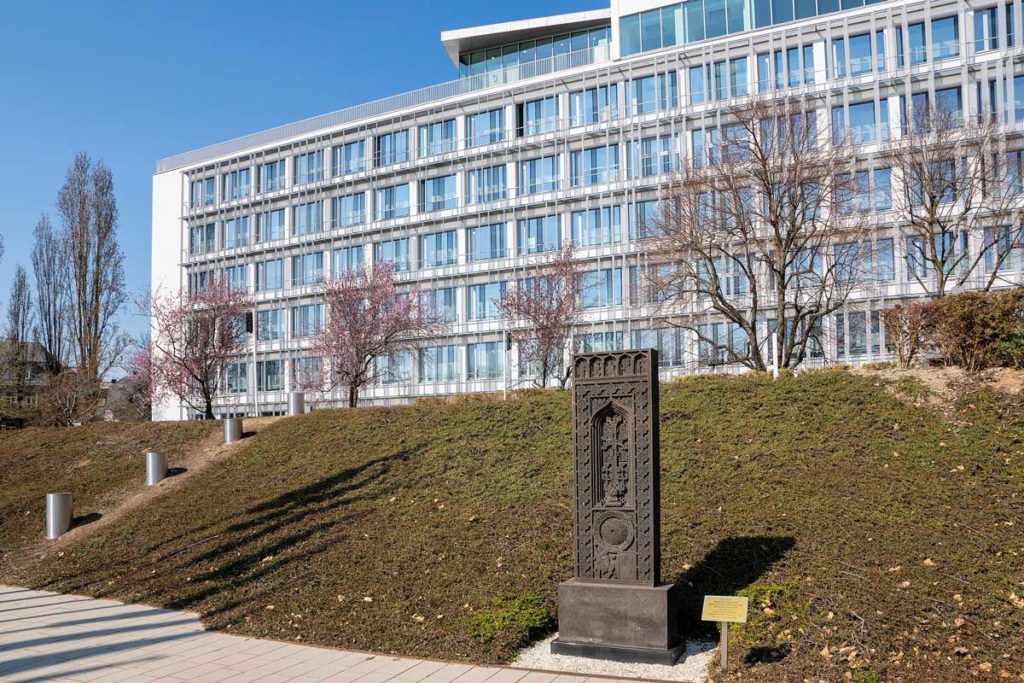
The Council of Europe
As you continue walking through the gardens of the Palais de l'Europe, you will face the Council of Europe. This building was designed by the French architect Henry Bernard. The building is very imposing: 64 000 m², inaugurated in 1977.
I was overwhelmed by the immensity of the Palais de l'Europe. I felt very small next to the huge flags of the member states. At this moment, I understood why Strasbourgeois are so fond of their Europe.
In the big garden, I discovered an artistic Europe with numerous statues around the Palace. The one that impressed me the most was the work of the sculptor Mariano González Beltrán, entitled "Human Rights". The work, which was donated by Spain, symbolizes a society that lives in harmony with human rights, in line with the work of the Council of Europe.
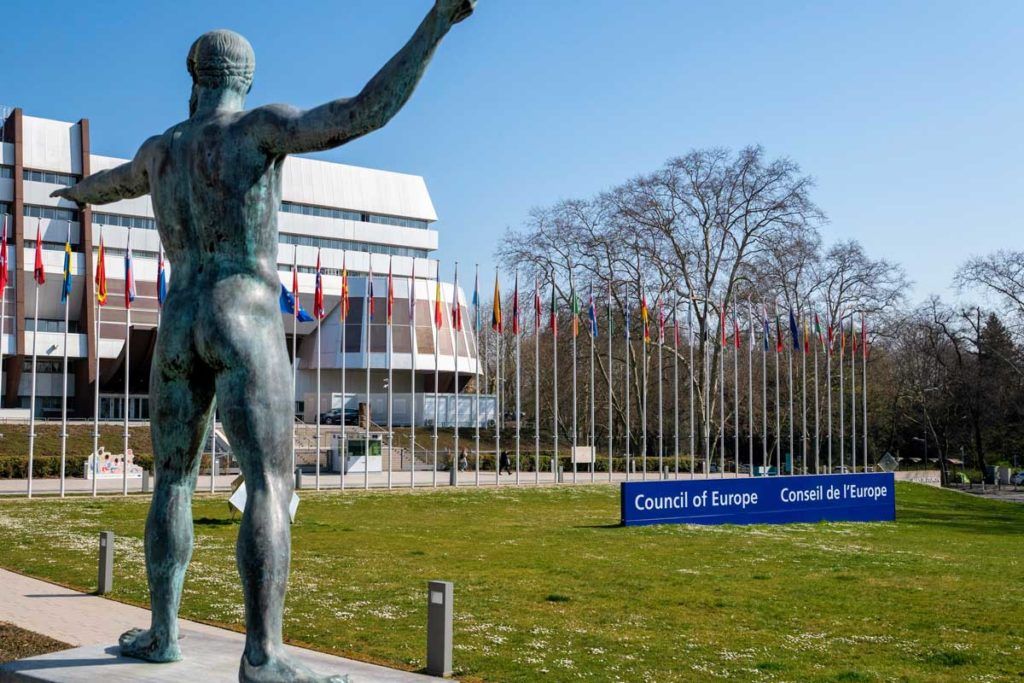
The Agora
To reach the Agora, the penultimate stage of the European district, you will have to go up the Avenue de l'Europe by passing by the flagstones for Europe or the Walk of Fame of Strasbourg.
The Agora is the most recent building of the Council of Europe. It was inaugurated in 2008. Several bicycle paths pass in front of it. One can easily stop to contemplate the modern architecture and the large glass façade of the building.
I was struck by the contrast between the modern European institutions and the picturesque half-timbered houses right next door.
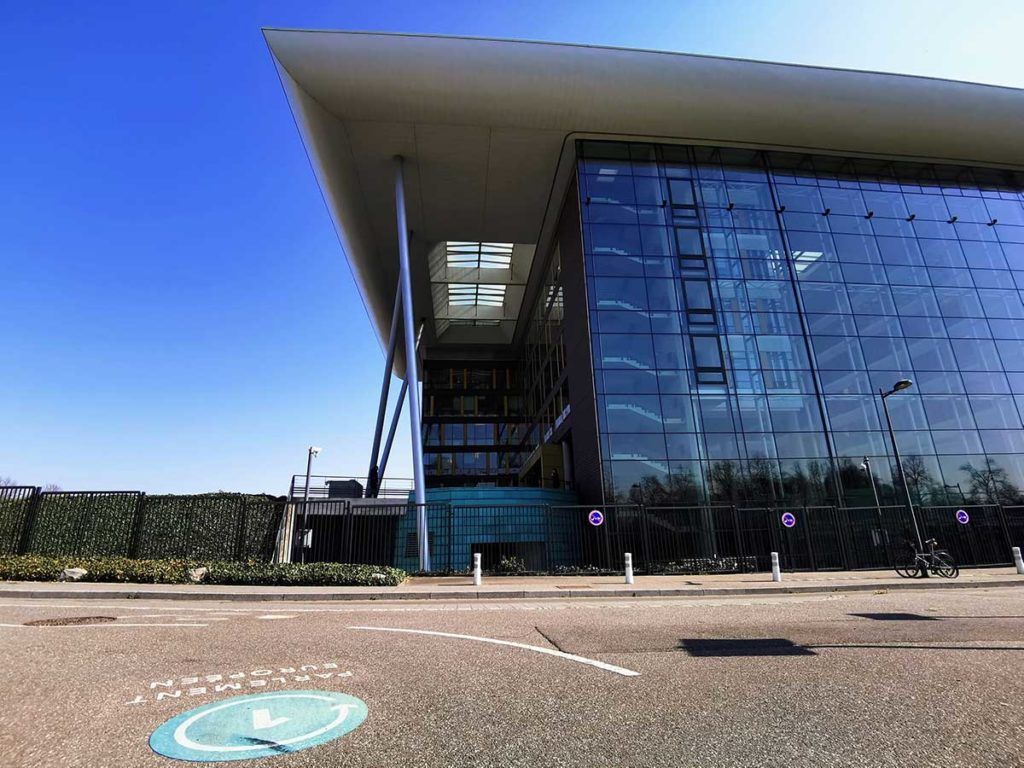
The European Pharmacopoeia
The European Directorate for the Quality of Medicines and Health Care, better known as the European Pharmacopoeia, is the eighth and final step of the Parcours d'Europe in Strasbourg.
The architects are the same as for the Agora building. I really liked the water green color of the Pharmacopoeia, which reminds the health environment. The large glass facades are also very beautiful. I was disappointed, however, because the building can only be contemplated from afar, through the fence and the parking lot... where many cars are parked!
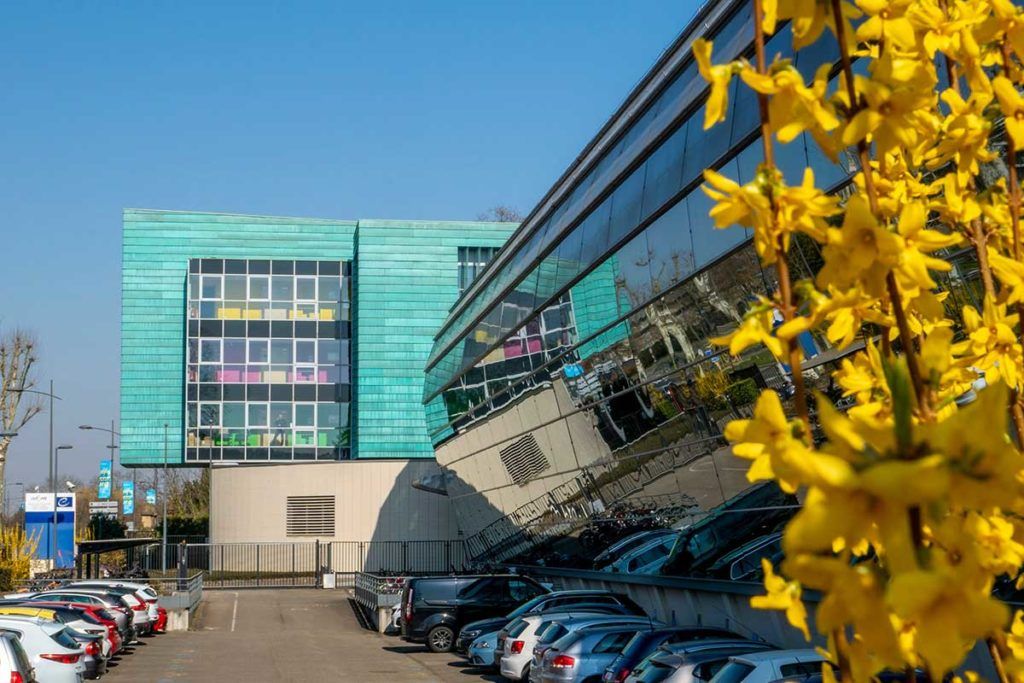
My tips for a successful walk through the European institutions
Now that you are more familiar with the Parcours d'Europe, here are my tips for a successful European walk.
How to reach the buildings of the European district of Strasbourg?
The European district is well served by public transport. To get to the Lieu d'Europe from downtown Strasbourg, the first stop on the Parcours d'Europe, take streetcar E to the "Boecklin" stop.
You can also ride a bike along the cycle paths and enjoy the beautiful view along the Ill River. If you come from Neudorf or Rivetoile districts, I strongly advise you to pass in front of the beautiful Orthodox Church, which is worth a visit... and a picture!
How to visit the Parcours d'Europe ?
It's 3 kilometer walk.
It is possible to walk (with a stroller or in a wheelchair!). But I believe biking is better than walking to go from one European institution to another. For those looking for an unusual walk, I recommend discovering the European quarter by segway.
What is the map of the European district?
The map of the European district of Strasbourg can be found along the Europe Trail.

